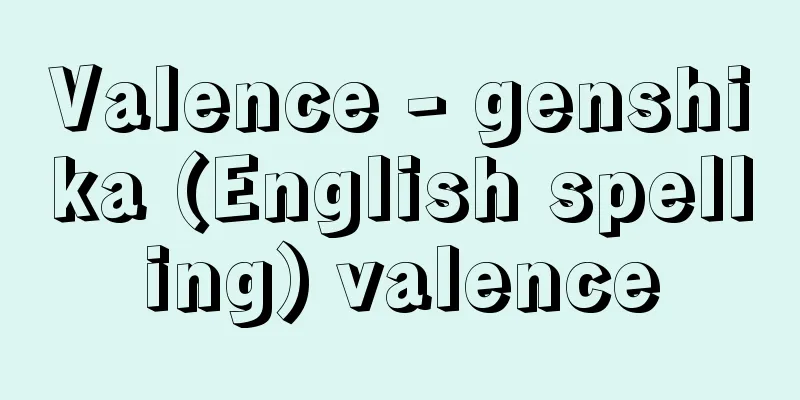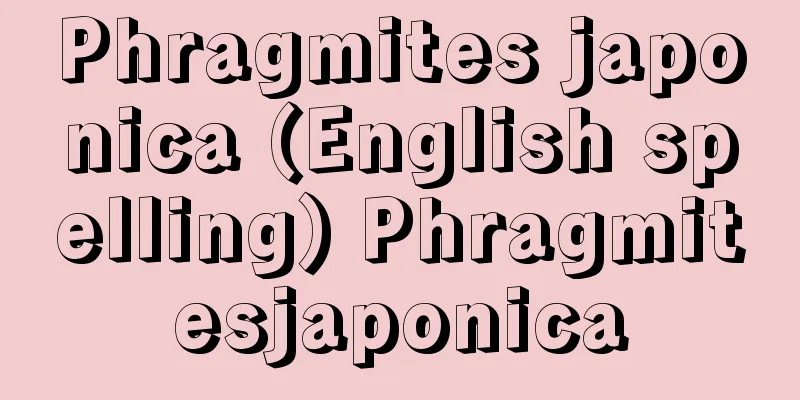Valence - genshika (English spelling) valence

|
It is a number that represents the ability of an atom of an element to bond with atoms of other elements, that is, a value obtained by dividing the atomic weight by the equivalent. Hydrogen is taken as the standard, with hydrogen atoms being monovalent. For example, in hydrogen chloride (HCl), one chlorine atom is bonded to one hydrogen atom, so the valence of the chlorine atom is monovalent, and as can be seen from the bonds in the water molecule H2O , the valence of the oxygen atom is divalent. Similarly, the valence of the nitrogen atom is trivalent, as can be seen from the bonds in ammonia NH3 . From this perspective, it appears that the number of groups in the periodic table of elements directly corresponds to the value of the atomic valence. In fact, this concept generally applies to the elements in the second period. Not all elements bond directly to hydrogen, so in such cases, the atomic valence of chlorine is considered to be monovalent and that of oxygen to be divalent, and the ratio of the number of atoms in the compound with them is found to calculate the atomic valence of the element. It is more convenient to distinguish between electrical positive and negative valences for each element, and the electronegativity of an element is a guide to distinguishing between positive and negative. For example, if the valence of a hydrogen atom is positive 1, then the valences of oxygen and chlorine are negative 2 and 1, respectively. However, many elements can show both positive and negative valences at the same time. For example, the negative valence of chlorine is only 1 due to the bond with hydrogen chloride, but in perchloric acid (HClO4 ) , the valence of chlorine is positive 7. In this way, the valence of each element does not necessarily have a fixed value. The same is true for sulfur, which has a negative valence of 2 in hydrogen sulfide H 2 S, but can have a positive valence of 2, 4, or 6. Valence is the ability of an atom to bond, but it should not be thought of as the number of atoms that bond, but merely the ratio of bonds. However, the concept of valence is extremely useful when studying carbon compounds (organic chemistry). If the valence of carbon is 4, and the valences of hydrogen, oxygen, and nitrogen are 1, 2, and 3, respectively, methane is CH4 , and in methanol (methyl alcohol CH3OH ) , one of the hydrogens in methane is replaced with a hydroxyl group -OH, which can be easily understood using the concept of valence. Also, it can be easily understood using the valence of each functional group that methylamine CH3NH2 consists of the bonds between the methyl group -CH3 and the amino group -NH2 . [Takashi Shimozawa] [Reference] |Source: Shogakukan Encyclopedia Nipponica About Encyclopedia Nipponica Information | Legend |
|
ある元素の原子がほかの元素の原子と結合する能力を表す数、すなわち原子量を当量で割った値である。基準には水素をとり、水素原子を1価とする。たとえば、塩化水素HClは塩素原子一つが水素原子一つと結合しているので、塩素原子の原子価は1価であり、水分子H2Oの結合からわかるように、酸素原子の原子価は2価である。同様に、窒素原子の原子価は、アンモニアNH3の結合からわかるように3価である。このようにみると、元素の周期表における族の数がそのまま原子価の値に対応するようにみえる。実際、第2周期の元素についてはおおむねこの考え方が対応する。 すべての元素は水素と直接結合するとは限らないので、そのような場合には、塩素の原子価を1価、酸素のそれを2価として、それらとの化合物の原子数の比を求め、その元素の原子価を算出する。 各元素の原子価には電気的な正負の区別をつけたほうが便利であり、元素の電気陰性度が正負の区別の目安となる。たとえば、水素原子の原子価を正の1価とすれば、酸素、塩素の原子価はそれぞれ負の2価、1価である。しかし、多くの元素は同時に正負の両原子価を示すことがある。たとえば、塩素の負原子価は塩化水素の結合から1価のみであるが、過塩素酸HClO4では塩素の原子価は正原子価7となる。このように、各元素の原子価はかならずしも一定の値をもたない。 硫黄(いおう)の場合も同様で、硫化水素H2Sから負原子価は2価であるが、正原子価は2価、4価、6価をとりうる。 原子価は原子の結合する能力であるが、原子が結合するその数のように考えてはならず、あくまでも単なる結合する割合である。しかし、炭素化合物(有機化学)を学習する際には原子価の概念がきわめて便利である。炭素の原子価を4、水素、酸素、窒素の原子価をそれぞれ1、2、3価とするとき、メタンはCH4であり、メタノール(メチルアルコールCH3OH)はメタンの水素の一つがヒドロキシ基-OHと置換したことが原子価の概念で容易に理解できるし、またメチルアミンCH3NH2はメチル基-CH3とアミノ基-NH2の結合からなることも官能基ごとの原子価を用いて容易に理解できる。 [下沢 隆] [参照項目] |出典 小学館 日本大百科全書(ニッポニカ)日本大百科全書(ニッポニカ)について 情報 | 凡例 |
<<: Atomic nucleus - Genshikaku
Recommend
Riverbank - Kashi
In ancient and medieval times, the stakes and pole...
Parliamentary Police - Giin Keisatsu
... Non-repeated matters: Once the will of the Di...
Anatomical Philosophy
He also believed that the differences in the form...
Toller
German playwright and poet. Born into a Jewish mer...
Allium schubertiii - Allium schubertiii
...A few leaves usually develop in early spring, ...
Gion and Gion - Gion
Two Shirabyoshi sisters who appear in Volume 1 of ...
Canon Medicinae (English)
…Almost a century later, Jurjani's book The T...
Landslide - yamakuzure
A phenomenon in which rocks or soil that make up ...
Ibn Khani - Ibn Khani
… In the Maghreb and Al-Andalus, the mainstream o...
Lot quality
...(1) As a quality control term, it is a collect...
Peroxodisulfuric acid
…Also known as Caro's acid. (2) Peroxodisulfu...
Change of family name - Kaishi
〘Noun〙 When there is an unavoidable reason, a pers...
Sakartvelos Sabchota Sotsialisturi Respublika (English spelling) Sakartvelos Sabchota Sotsialisturi Respublika
…Official name: Republic of GeorgiaSakartvelos Re...
Stander - Richa
"Ritsu" is the customary reading of &quo...
Chinese - Ayahito
〘Noun〙① A lineage of continental immigrants in the...









